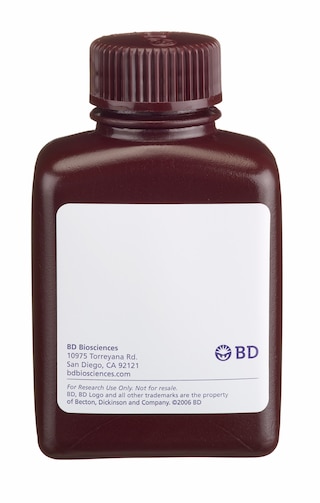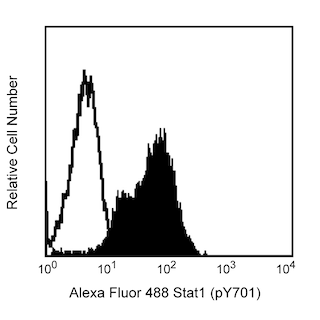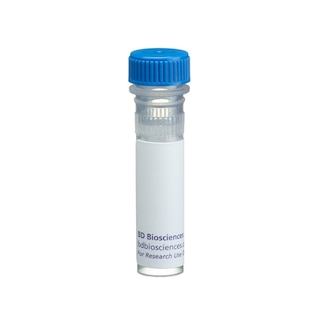-
Reagents
- Flow Cytometry Reagents
-
Western Blotting and Molecular Reagents
- Immunoassay Reagents
-
Single-Cell Multiomics Reagents
- BD® OMICS-Guard Sample Preservation Buffer
- BD® AbSeq Assay
- BD® OMICS-One Immune Profiler Protein Panel
- BD® Single-Cell Multiplexing Kit
- BD Rhapsody™ ATAC-Seq Assays
- BD Rhapsody™ Whole Transcriptome Analysis (WTA) Amplification Kit
- BD Rhapsody™ TCR/BCR Next Multiomic Assays
- BD Rhapsody™ Targeted mRNA Kits
- BD Rhapsody™ Accessory Kits
-
Functional Assays
-
Microscopy and Imaging Reagents
-
Cell Preparation and Separation Reagents
-
- BD® OMICS-Guard Sample Preservation Buffer
- BD® AbSeq Assay
- BD® OMICS-One Immune Profiler Protein Panel
- BD® Single-Cell Multiplexing Kit
- BD Rhapsody™ ATAC-Seq Assays
- BD Rhapsody™ Whole Transcriptome Analysis (WTA) Amplification Kit
- BD Rhapsody™ TCR/BCR Next Multiomic Assays
- BD Rhapsody™ Targeted mRNA Kits
- BD Rhapsody™ Accessory Kits
- United States (English)
-
Change country/language
Old Browser
This page has been recently translated and is available in French now.
Looks like you're visiting us from {countryName}.
Would you like to stay on the current country site or be switched to your country?




Left: Cell cycle expression of retinoblastoma proteins (Rb) in MOLT-4 human leukemia cell line expressing Rb. Rb migrates as multiple bands due to varying degrees of phosphorylation. Whole cell lysates from synchronized MOLT-4 cultures were seperated by SDS-PAGE (4-20% gradient). Blots were incubated with anti-Rb at 2 µg/mL (Cat. No.554136). Cell cycle stages are denoted as Q (quiescent), G1, S, and M. pRb, underphosphorylated Rb. ppRb, phosphorylated and highly phosphorylated species of Rb. Right: Immunofluorescent staining of A549 (ATCC CCL-185) cells. Cells were seeded in a 96 well imaging plate (Cat. No. 353219) at ~ 10,000 cells per well. After overnight incubation, cells were stained using the alcohol perm protocol and the anti-Rb (332-344) antibody. The second step reagent was FITC goat anti mouse Ig (Cat. No. 554001). The image was taken on a BD Pathway™ 855 Bioimager using a 20x objective. This antibody also stained U-2 OS (ATCC HTB-96) and HeLa (ATCC CCL-2) cells using both the Triton™ X-100 and alcohol perm protocols (see Recommended Assay Procedure).


BD Pharmingen™ Purified Mouse Anti-Human Retinoblastoma Protein

Regulatory Status Legend
Any use of products other than the permitted use without the express written authorization of Becton, Dickinson and Company is strictly prohibited.
Preparation And Storage
Recommended Assay Procedures
Bioimaging
1. Seed the cells in appropriate culture medium at ~10,000 cells per well in a BD Falcon™ 96-well Imaging Plate (Cat. No. 353219) and culture overnight.
2. Remove the culture medium from the wells, and fix the cells by adding 100 μl of BD Cytofix™ Fixation Buffer (Cat. No. 554655) to each well. Incubate for 10 minutes at room temperature (RT).
3. Remove the fixative from the wells, and permeabilize the cells using either BD Perm Buffer III, 90% methanol, or Triton™ X-100:
a. Add 100 μl of -20°C 90% methanol or Perm Buffer III (Cat. No. 558050) to each well and incubate for 5 minutes at RT.
OR
b. Add 100 μl of 0.1% Triton™ X-100 to each well and incubate for 5 minutes at RT.
4. Remove the permeabilization buffer, and wash the wells twice with 100 μl of 1× PBS.
5. Remove the PBS, and block the cells by adding 100 μl of BD Pharmingen™ Stain Buffer (FBS) (Cat. No. 554656) to each well. Incubate for 30 minutes at RT.
6. Remove the blocking buffer and add 50 μl of the optimally titrated primary antibody (diluted in Stain Buffer) to each well, and incubate for 1 hour at RT.
7. Remove the primary antibody, and wash the wells three times with 100 μl of 1× PBS.
8. Remove the PBS, and add the second step reagent at its optimally titrated concentration in 50 μl to each well, and incubate in the dark for 1 hour at RT.
9. Remove the second step reagent, and wash the wells three times with 100 μl of 1× PBS.
10. Remove the PBS, and counter-stain the nuclei by adding 200 μl per well of 2 μg/ml Hoechst 33342 (e.g., Sigma-Aldrich Cat. No. B2261) in 1× PBS to each well at least 15 minutes before imaging.
11. View and analyze the cells on an appropriate imaging instrument.
Bioimaging: For more detailed information please refer to http://www.bdbiosciences.com/support/resources/protocols/ceritifed_reagents.jsp
Western blot: For more detailed information please refer to http://www.bdbiosciences.com/pharmingen/protocols/Western_Blotting.shtml
Product Notices
- Since applications vary, each investigator should titrate the reagent to obtain optimal results.
- This antibody has been developed and certified for the bioimaging application. However, a routine bioimaging test is not performed on every lot. Researchers are encouraged to titrate the reagent for optimal performance.
- Triton is a trademark of the Dow Chemical Company.
- Caution: Sodium azide yields highly toxic hydrazoic acid under acidic conditions. Dilute azide compounds in running water before discarding to avoid accumulation of potentially explosive deposits in plumbing.
- Please refer to www.bdbiosciences.com/us/s/resources for technical protocols.
Companion Products




.png?imwidth=320)
Members of the retinoblastoma (Rb) family, including the related proteins p107 and p130, share several properties, including the ability to regulate E2Fdependent transcription and to regulate cell-cycle progression. The Rb gene product is a phosphoprotein that is expressed in most normal cells of vertebrates. Rb acts as a tumor suppressor by providing a cell cycle checkpoint between the G1 and S phases. The active, underphosphorylated form of Rb (Rb or pRb) is primarily found in resting or fully differentiated cells. The activity of Rb is negatively regulated by cyclin dependent kinases, which phosphorylate Rb in late G1. Thus, the hyperphosphorylated form (ppRb) is primarily found in proliferating cells. pRB inactivation is a critical step leading to S-phase commitment at the G1 checkpoint of the cell cycle. In addition, the underphosphorylated form of Rb may bind to viral oncogenes such as SV40 large T Ag, adenoviral EIA and HPV-E7, which may contribute to the transforming activity of these viral oncoproteins.
G3-245 was made using a Trp-E-Rb fusion protein as immunogen and recognizes an epitope between amino acids 332-344 (DARLFDHDKTLQ) of the human retinoblastoma protein (pp110-114 Rb). In western blot analysis, Rb migrates as multiple closely-spaced bands between 110-116 kD on SDS-PAGE. The bands represent different Rb phosphorylation states where the level of Rb phosphorylation can be cell cycle and/or cell-type dependent (i.e all forms may not be seen in all cell types that express Rb). G3-245 has been reported to recognize human, monkey, mouse, rat, mink and a putative quail Rb. This antibody has also been referred to as Mh-RB-02,20 and mAb-245.
Development References (9)
-
Bignon YJ, Chen Y, Chang CY, et al. Expression of a retinoblastoma transgene results in dwarf mice. Genes Dev. 1993; 7(9):1654-1662. (Clone-specific: Western blot). View Reference
-
Cance WG, Brennan MF, Dudas ME, Huang CM, Cordon-Cardo C. Altered expression of the retinoblastoma gene product in human sarcomas. N Engl J Med. 1990; 323(21):1457-1462. (Clone-specific: Immunohistochemistry). View Reference
-
DeCaprio JA, Ludlow JW, Figge J, et al. SV40 large tumor antigen forms a specific complex with the product of the retinoblastoma susceptibility gene. Cell. 1988; 54(2):275-283. (Clone-specific: Immunoprecipitation, Western blot). View Reference
-
Dowdy SF, Hinds PW, Louie K, Reed SI, Arnold A, Weinberg RA. Physical interaction of the retinoblastoma protein with human D cyclins. Cell. 1993; 73(3):499-511. (Clone-specific: Flow cytometry). View Reference
-
Huang S, Lee WH, Lee EY. A cellular protein that competes with SV40 T antigen for binding to the retinoblastoma gene product. Nature. 1991; 350(6314):160-162. (Clone-specific: Western blot). View Reference
-
Mittnacht S, Weinberg RA. G1/S phosphorylation of the retinoblastoma protein is associated with an altered affinity for the nuclear compartment. Cell. 1991; 65(3):381-393. (Clone-specific: Fluorescence microscopy). View Reference
-
Niwa S, Ueno S, Shirasu R. Alteration of pRb expression in the development of rat tongue carcinoma induced by 4-nitroquinoline 1-oxide. Oral Oncol. 2001; 37(7):579-585. (Clone-specific: Immunofluorescence). View Reference
-
Nork TM, Millecchia LL, Poulsen G. Immunolocalization of the retinoblastoma protein in the human eye and in retinoblastoma. Invest Ophthalmol Vis Sci. 1994; 35(6):2682-2692. (Clone-specific: Immunohistochemistry). View Reference
-
Riley DJ, Lee EY, Lee WH. The retinoblastoma protein: more than a tumor suppressor. Annu Rev Cell Biol. 1994; 10:1-29. (Biology). View Reference
Please refer to Support Documents for Quality Certificates
Global - Refer to manufacturer's instructions for use and related User Manuals and Technical data sheets before using this products as described
Comparisons, where applicable, are made against older BD Technology, manual methods or are general performance claims. Comparisons are not made against non-BD technologies, unless otherwise noted.
For Research Use Only. Not for use in diagnostic or therapeutic procedures.